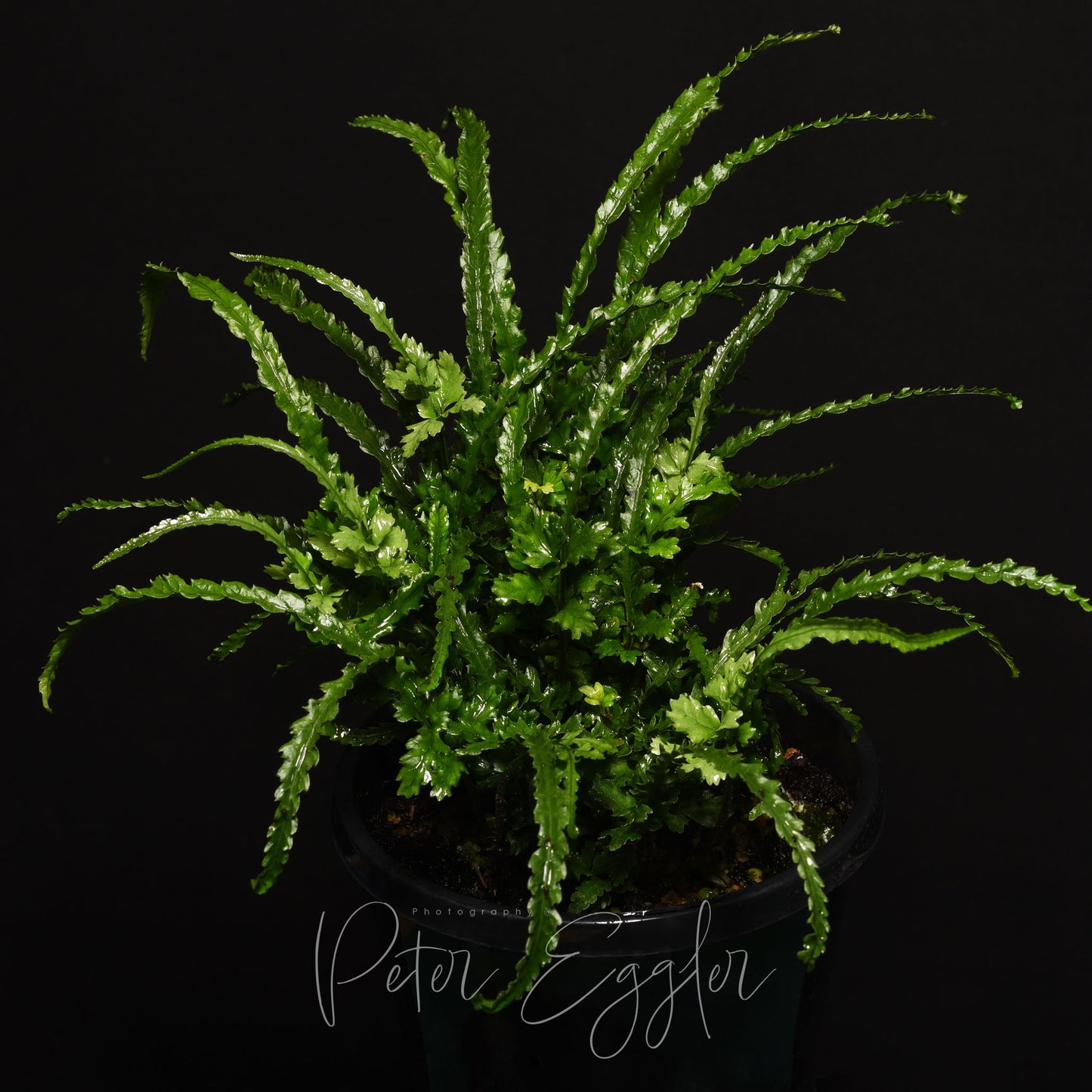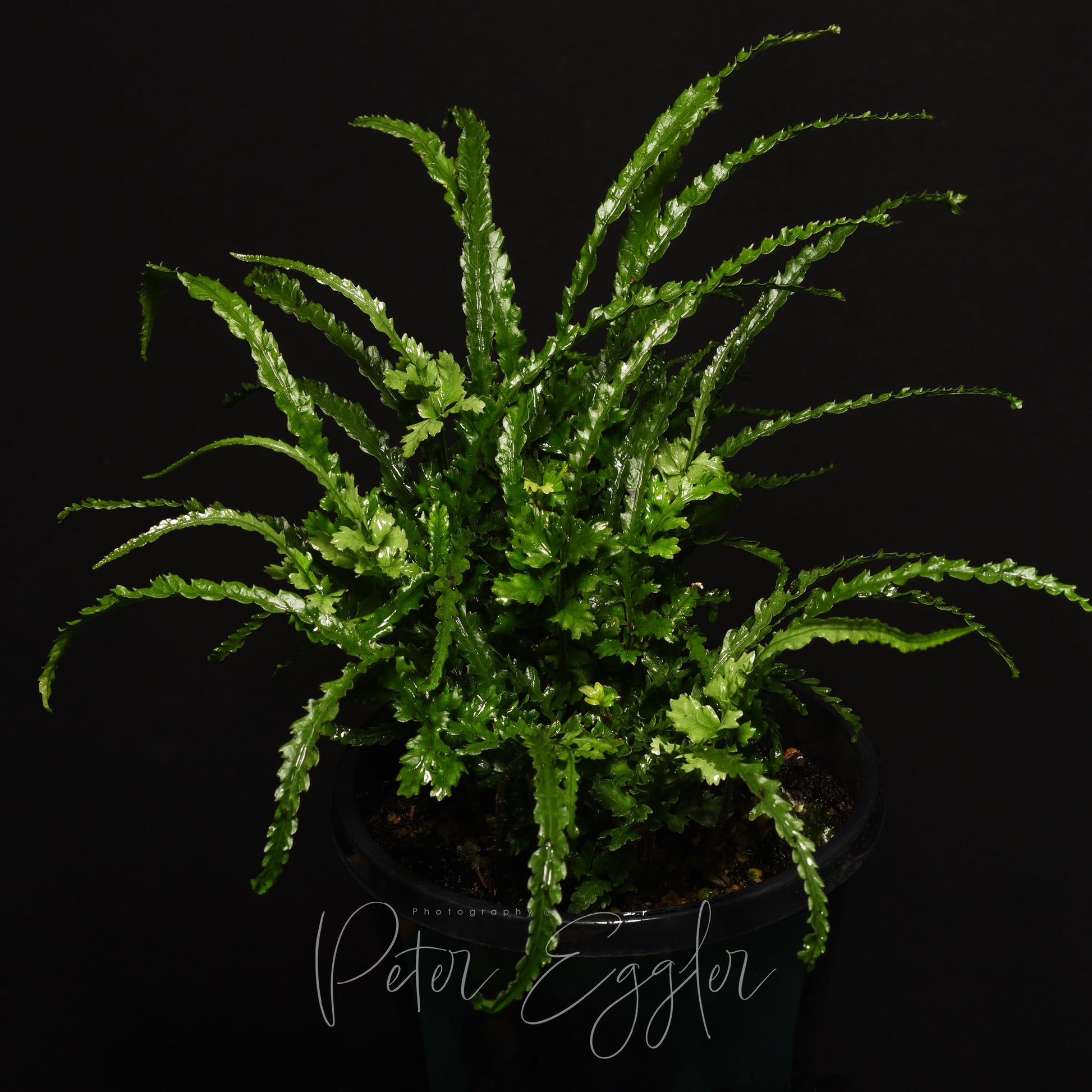Bolbitis sp. "Gua Angin"
Bolbitis sp. "Gua Angin"
Out of stock
Plant Size/Portion Size:
Plant Size/Portion Size:
Couldn't load pickup availability
Plant Name: Bolbitis sp. ‘Gua Angin’
Tankquility Catalogue #: TQ-06440
Synonyms/Trade Names:
Original Plant Sourced as: Bolbitis sp. ‘Gua Angin’
Plant Family: Polypodiaceae
Plant Native to1: The origin of this plant is unknown. An unsubstantiated notion is that the trade name refers to Gua Angin (Wind Cave) near the Sarawak River, Borneo (Flowgrow Forums). The genus Bolbitis is widespread across tropical and subtropical regions of the world.
Plant Type: Aquatic, Semiaquatic
Image Details2:
Image 1: Emerse Bolbitis sp. ‘Gua Angin’.
General Information and Cultivation3: A slow growing epiphytic fern, relatively easy to cultivate in both emerse and submerse conditions. Adventitious plantlets may form on the fronds of the plant which allows for easy propagation. Attach to wood and rocks in the aquarium or terrarium. Terrarium grown plants also do well in a free draining substrate that is kept reasonably wet. Do not bury the rhizome or it may rot. Culturing Bolbitis sp. ‘Gua Angin’ in a closed terrarium with frequent spraying of water (at least once per day) will help to keep the plant looking good.
Ease of Care: Easy
Plant Size/Portion Size:
Emerse grown plant: Plant with good root development, grown in a 66mm squat square pot.
Further Reading:
1 Distribution is taken from Plants of the World Online (https://powo.science.kew.org/) unless stated otherwise.
2 All images used on the Tankquility website have been taken of plants growing in our nursery.
3 The general and cultural information provided is based on our own experience and observation. If we supply information from others, we have acknowledged the source.
SKU:
View full details
-
Plants can alter their appearance due to seasonal influence, or in response to different environmental conditions or stage of maturity. This phenomenon is known as phenotypic plasticity, and it is especially evident in Aquatic/Semiaquatic plants. Whilst we endeavour to portray a plant accurately, the plant you receive may have been growing under different conditions or be at a different stage of maturity to the one in the image(s) provided.
How we package your plants...
-
Aquatic/Semiaquatic plants will be shipped bare-rooted and wrapped in damp paper for protection when required.
-
Terrestrial/Epiphytic plants will be shipped bare-rooted and the roots wrapped in damp sphagnum moss for protection when required.

